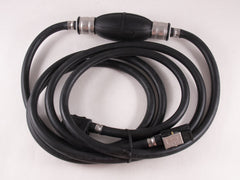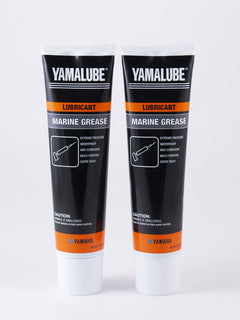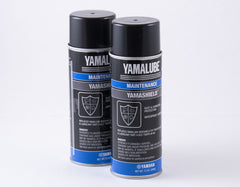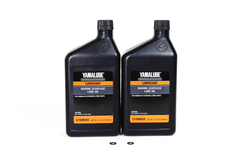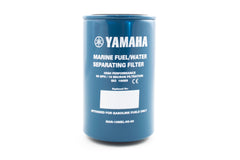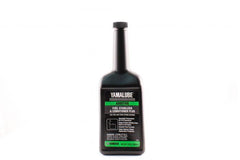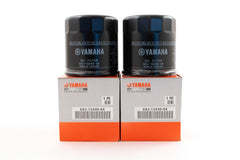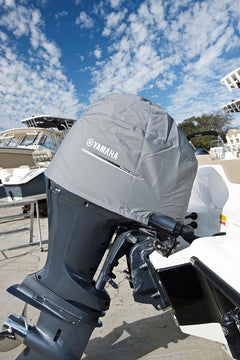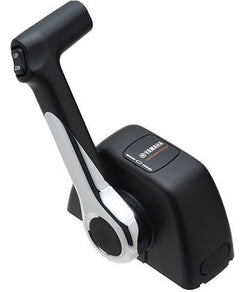Yamaha F115 FAQ
How often to change the oil in Yamaha 4 Stroke outboard?
The frequency of oil changes in a Yamaha 4-stroke outboard engine depends on several factors, including the model year of the engine, the hours of use, the operating conditions, and the type of oil used. As a general guideline, Yamaha recommends changing the oil and oil filter every 100 hours of operation or at least once a year, whichever comes first.
However, suppose the outboard is used in heavy-duty conditions such as high-speed running, trolling for extended periods, or operating in dirty or dusty environments. In that case, more frequent oil changes may be necessary. In these cases, it is recommended to check the oil level and condition regularly and change the oil and filter more frequently if necessary.
It is important to use the recommended type and weight of oil for the specific Yamaha outboard model. This information can be found in the owner's manual or Yamaha's website. Using the correct oil type and changing it according to the recommended schedule will help ensure the outboard engine's longevity and reliability.
What's the recommended annual maintenance for a gas-powered boat?
Recommended yearly maintenance for a gas-powered boat typically includes several important tasks to keep the boat running smoothly and safely. Some of the most important maintenance tasks include changing the engine oil and filter, replacing the fuel filter, checking the battery, and inspecting the propeller for damage. It is also recommended to inspect the boat's fuel system, including the fuel tank and fuel lines, is also recommended for any signs of wear or damage.
Other important maintenance tasks may include lubricating moving parts, inspecting the steering and throttle systems, and checking the boat's electrical system for any loose or damaged wiring. By performing these annual maintenance tasks, boat owners can help ensure their vessel's safety and reliability and enjoy many years of trouble-free boating.
How many hours does a 2 stroke outboard last? Do they last longer than a 4 stroke outboard?
The lifespan of a 2-stroke outboard engine can vary depending on several factors, such as the model, maintenance, and usage conditions. Generally, if a 2-stroke outboard is properly maintained and serviced regularly, it can last for many years and hundreds, if not thousands, of operating hours. However, 2-stroke engines tend to have a shorter lifespan than 4-stroke engines due to how they operate.
The lifespan of a 4-stroke outboard engine can also vary depending on several factors, such as the model, maintenance, and usage conditions. 4-stroke engines tend to be more durable than 2-stroke engines due to their design, which operates with fewer moving parts and lower operating speeds, reducing wear and tear.
However, the lifespan of both 2-stroke and 4-stroke outboard engines will depend on many factors, and it's challenging to provide a specific number of hours or years that an engine will last.
Ultimately, the lifespan of an outboard motor will depend on factors such as usage, operating conditions, and regular maintenance. Regular maintenance and proper usage, such as not over-revving the engine, will help ensure an outboard engine's longevity and reliability.
Should I use OEM Yamaha F115 parts or aftermarket parts?
Both OEM (original equipment manufacturer) Yamaha F115 parts and aftermarket F115 parts can be used to repair or maintain your Yamaha outboard motor. However, there are some factors to consider when deciding which parts to use.
OEM Yamaha parts are designed specifically for your outboard model and have been tested to meet the same quality standards as the original parts that came with your outboard. OEM parts are generally more expensive than aftermarket parts, but they provide a greater level of reliability and consistency, and they may come with a warranty or guarantee from the manufacturer.
On the other hand, aftermarket parts are often less expensive than OEM parts, and there are often many options to choose from. While some aftermarket parts may be of equal or better quality than OEM parts, others may not meet the same standards, which could affect the performance or lifespan of your outboard.
Ultimately, deciding whether to use OEM or aftermarket F115 parts depends on your budget, personal preference, and the specific parts needed. It's important to do your research and select reputable suppliers when considering aftermarket parts and to always follow the manufacturer's guidelines for repairs and maintenance to ensure the safety and reliability of your Yamaha outboard motor.
Does the MYYAMAHAOUTBOARD app help me keep track of how many hours on a boat engine I have?
Yes, the MyYamahaOutboard app can help you track how many hours your boat engine has been used. The app provides real-time information about the engine's usage, including its running hours. This information can be helpful for keeping track of maintenance schedules and ensuring that the engine is serviced at the appropriate intervals.
To access this information, connect the app to your Yamaha outboard motor using a compatible interface cable. Once connected, the app will display a range of data, including engine hours, fuel consumption, and battery voltage. You can also set alerts to remind you when it's time for scheduled maintenance.

